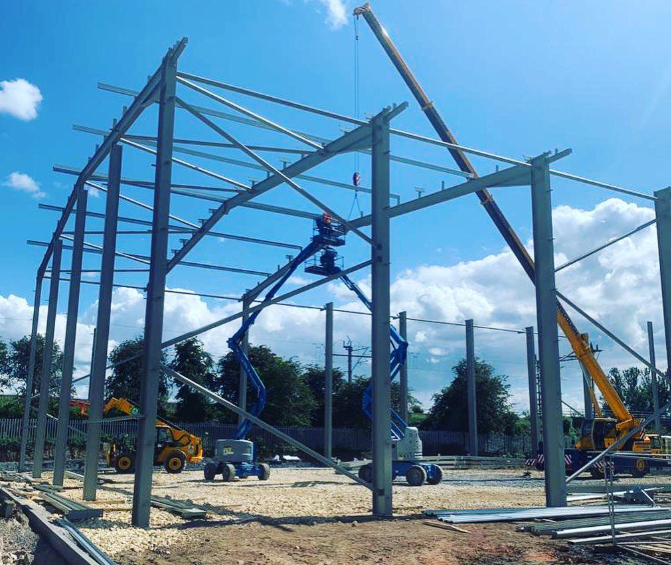Three Construction Methods for Xinguangzheng Steel Structure Space Grids/Space Frames

I. High-Altitude Assembly Method
The high-altitude assembly method involves first erecting assembly scaffolding at the design position. Components of the Xinguangzheng steel structure grid are then lifted piece-by-piece (or in blocks) to their designated high-altitude positions by crane for assembly on the scaffolding. This method sometimes eliminates the need for large lifting equipment, but requires significant scaffolding and involves substantial high-altitude work. It is therefore more suitable for Xinguangzheng steel space grids/space frames fabricated from sections and connected with high-strength bolts, or for tubular grids with bolted spherical joints. This method is still used for some space grids today.
II. Integral Installation Method
The integral installation method entails assembling the entire grid structure on the ground first, then lifting it as a complete unit to its design position using lifting equipment for final fixing. This method avoids the need for tall assembly scaffolding, reduces high-altitude work, and facilitates quality welding control. However, it requires lifting equipment with substantial capacity and involves more complex technology. This method is thus well-suited for spherical joint space grids/space frames (especially those with more members like triangular grids). Depending on the equipment used, integral installation can be further categorized into: multi-crane lifting method, pole lifting method, jack lifting method, and jack pushing-up method.
III. High-Altitude Sliding Method
The high-altitude parallel sliding method has seen increasing use for space grid roof construction in recent years, particularly suitable for projects like theaters and auditoriums. With this method, the grid is typically assembled on a platform built over the foyer roof slab (or on a platform erected over audience seating tiers). Once the first assembly unit (or segment) is complete, it is lowered onto sliding tracks and pulled forward a certain distance by traction equipment. The second unit (or segment) is then assembled on the platform, and upon completion, it is slid forward together with the first unit. This process of segmental assembly and progressive sliding continues until the entire grid is assembled and slid into its final position.
Sliding the assembled grid can be achieved in two ways:
Installing rollers under the grid supports, allowing them to roll along sliding tracks.
Installing base plates under the grid supports, enabling them to slide along steel plates pre-embedded in reinforced concrete frame beams.
Sliding can be powered by winches or hand chain hoists. Depending on the required traction force and the load-bearing capacity of the members between supports, single-point or multi-point traction can be employed. During sliding, the asynchrony (difference in movement) between the two ends of the grid should not exceed 50mm.



